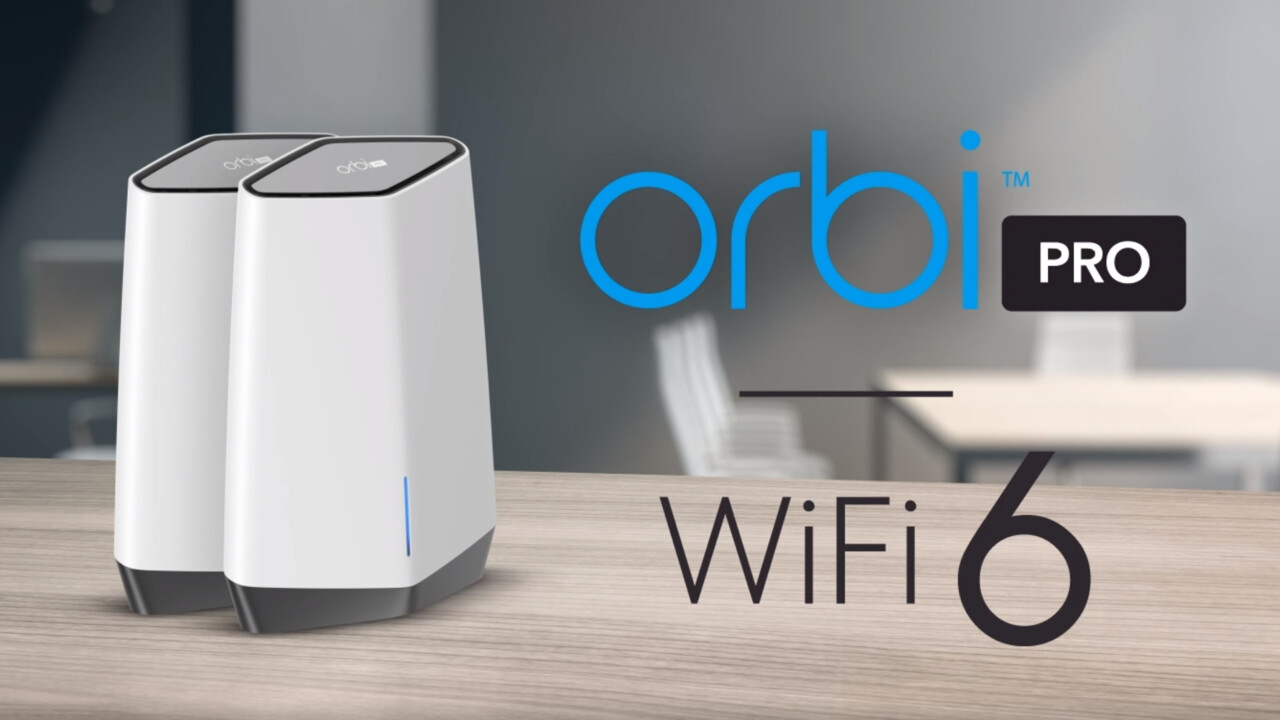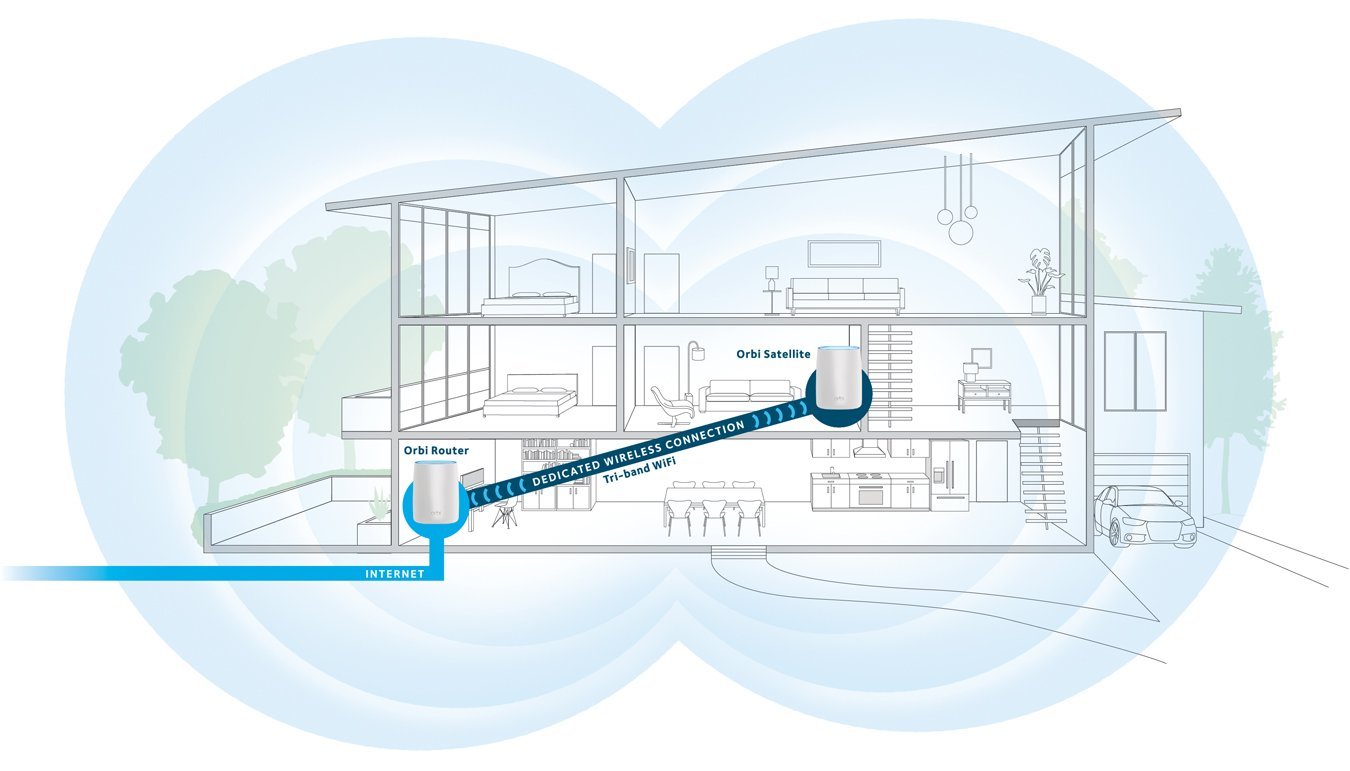Table of Content
That's enough to make the Nest WiFi our new pick as the best mesh Wi-Fi system available. The installation routine for creating a Nest Wi-Fi network is easy and logical with simple illustrated step-by-step instructions. You will need a phone or tablet because, unlike Netgear's Orbi, there's no way to set it up or configure the Nest WiFi units with a connected web browser. All told, it took a little less than 20 minutes to install the router and extension in my home, a little longer than the 15 minutes it took for an Orbi Voice. For me, it started with installing the Google Home app on my Samsung Galaxy Note 10+ phone. I set the Nest two-pack up in my three-story, 3,500-square-foot home, an older building with thick walls and lots of nooks and crannies.

Each node had screw mounting holes molded into their bases, which is a nice touch. However, the Trendnet’s admin interface was unpolished, and it placed dead last on our latency tests. TP-Link announced they will have Wi-Fi 7 routers and mesh systems in early 2023, including the Deco BE95, BE75, and BE65. All three use the 6 GHz radio frequency highlighted above, and are backward compatible with Wi-Fi 5, 6, and 6E. At the start, we anticipate that Wi-Fi 7 will improve communication between the mesh network’s router and extenders. Like with Wi-Fi 6E, you’ll have to wait for Wi-Fi 7-compatible laptops and phones to be released before you can fully utilize Wi-Fi 7 and harness its improvements.
Nest WiFi review: Performance
That could mean paying for another complete 2- or 3-piece set when you only need one more network extender. Instead, Eero offers individual Eero 6 extenders for a reasonable price (about $80), and a single Eero 6 router for $90. The AmpliFi Alien is very easy to set up, has excellent performance, and comes with an innovative front panel OLED display so you can geek out watching your network react in real time. However, we think it’s a sin to charge $700 for a Wi-Fi 6 mesh kit that lacks WPA3 security, and our picks performed faster for far less money. Also, while Ubiquiti Networks owns Amplifi, both UniFi and Amplifi are separate model lines, so their operating systems and features don’t work together on a combined network. We tested the ET8, a tri-band Wi-Fi 6E mesh kit, which is a follow-up to our upgrade pick .
It did reasonably well on our throughput tests, but it was less able to handle multiple clients on our latency tests, placing close to last. The three-piece Deco X55 is moderately priced but dropped connections during our performance testing, and it was unable to keep a 4K stream going to one of our laptops when the rest of the network was busy. We also experienced dropped connections on some of our performance tests. Also, a HomeShield Pro subscription ($55 to $72 per year) is an added expense, and needed for parental controls and smart device security. As the throughput graph above shows, the mesh kits we tested with an efficient wireless backhaul tended to excel on our tests. The better-performing mesh kits, including our upgrade pick, the tri-band Asus ZenWifi AX , were able to handle each situation adroitly and provided over 600 Mbps at close range and 100 Mbps to 500 Mbps in the other situations.
Asus ZenWiFi AX (XT
We tested the pack of three and found that since all three nodes have the same processing power, throughput is ultimately faster on an Eero 6+ network compared with the Eero 6. That’s nice for the occasional large file download, like an update to a PC or console game. The wired ports also allow you to use the Eero 6+ routers as wired extenders, similar to the Asus XT8. The Eero 6+ was also a bit faster than its cheaper sibling in the other rooms of the home, away from the main router. During our testing, the Eero 6 offered fast performance when our laptop was close to the base router, but throughput dropped off when the signal was bounced through the add-on adapters or through multiple walls. Eero advertises that it is suitable for homes with 900 Mbps broadband connections, though we weren’t able to reach that limit, measuring at about 590 Mbps on the laptop connected to the main base unit.
Most people don’t ever think to check if their router’s software is up-to-date, which can lead to big security holes. Also, a lot of the mesh kits look a little better than traditional routers, which tend to be angular, dark and bristling with antennas. The Synology mesh routers still make for a good combination with solid wireless connections, and if you’re into tuning your network for problem devices. For example, like the Asus ZenWiFi twins, you can separate the Synology’s 2.4 GHz band into a separate SSID to facilitate connecting smart devices like cameras and smart switches. Though both Wi-Fi 5 routers are starting to age, Synology is continuing to update both routers’ firmware.
Who mesh-networking kits are for
We’ve found in our testing that $100 is the sweet spot to get all the features you need without overpaying. Home mesh systems work like your normal Wi-Fi router, but come with several satellite units that pick up the Wi-Fi signal before it becomes too weak and rebroadcast it farther. With everything working, I was able to connect my trusty iPad Pro to the extension on the first try. I then took a test drive by asking Google's voice assistant to tell me the time, weather and current traffic on the George Washington Bridge. Next up, I created a voice print to identity me later; it took about a minute of saying various things and waiting on its processing.
We didn’t disable any of the surrounding Wi-Fi networks or wireless devices like Google Home speakers; these kept doing their usual noisy things, just as they probably do in your home. The neighbors and our home network also kept their Wi-Fi networks going, which left somewhere in the vicinity of a half-dozen to a dozen network names visible at any given time. But before you toss everything out and get a mesh kit, you should try moving your router to a central location—in smaller houses a single router can actually be more effective than mesh networking. Wi-Fi that sucks can be more frustrating than no Wi-Fi at all, and the culprit in many cases is one router trying to cover too much house.
The Deco W2400 is a Walmart exclusive, but we wanted to test it because it is one of the least expensive mesh-network kits on the market, with a price less than $100. It was the slowest performer on our throughput tests, but it surprised us with upper middle-of-the-pack latency results. It did fail one of our 4K streaming tests and one of the browsing tests when the network was fully loaded. This kit might work if you want to inexpensively outfit a spread-out home that doesn’t have a lot of devices and has a basic internet plan . The dual-band Netgear Nighthawk MK62 (and its three-piece sibling, the MK63) is a relatively inexpensive mesh kit, with small nodes that are easy to hide.

Alternatively, you can pair the extension with a Google Mini speaker as the right or left stereo channel for fuller sound. The Nest WiFi devices should fit into a variety of home decors, thanks to Google Home's evolving design language of organic shapes with no hard edges and soft colors. The router is available only in flat white, but the extensions come in Mist , Sand or white. If you can run Ethernet cables and use standard access points instead of a mesh kit, you should consider it.
For accessing these more advanced features, use the older Google Wi-Fi app. There you can make DHCP reservations or manage the system's privacy settings. The Nest WiFi equipment relies primarily on the Google Home app for making configuration changes, although the customization options are few and far between. In addition to adding extensions and setting up groups, the app can adjust how bright the router and extensions glow. I then named the router's room and entered what I wanted to use as the network's name and password. At this point I agreed to have Google run networking tests, diagnose problems and create statistics.
Like the other Asus kits, the XD6 performed above average, particularly at the large file throughput and latency tests, but our picks stand for the time being. Consider the Eero 6+, an upgraded and more expensive version of our top pick. Instead of the Eero 6’s purely wireless add-on extenders, the Eero 6+ comes with one, two, or three router units, with two Ethernet ports per node.
The six laptops were placed throughout the home, on all three floors and in the garage situated close to the cinder block foundation. The UDM’s administration app and web interface look polished and professional compared with those of home routers, and they offer plenty of settings and graphic monitors familiar to network engineers. But to folks who just want a simple-to-use router, Ubiquiti’s interface could look like an impenetrable wall of technical details. Estimated delivery dates - opens in a new window or tab include seller's handling time, origin ZIP Code, destination ZIP Code and time of acceptance and will depend on shipping service selected and receipt of cleared payment.


No comments:
Post a Comment